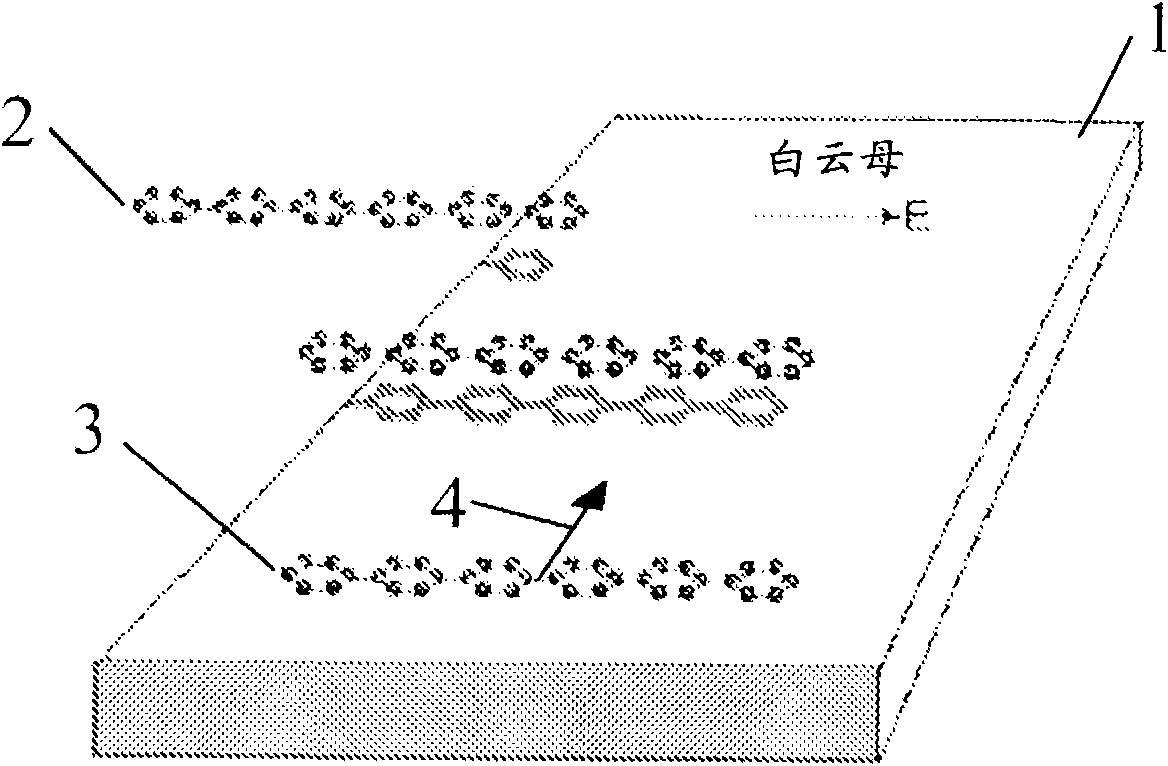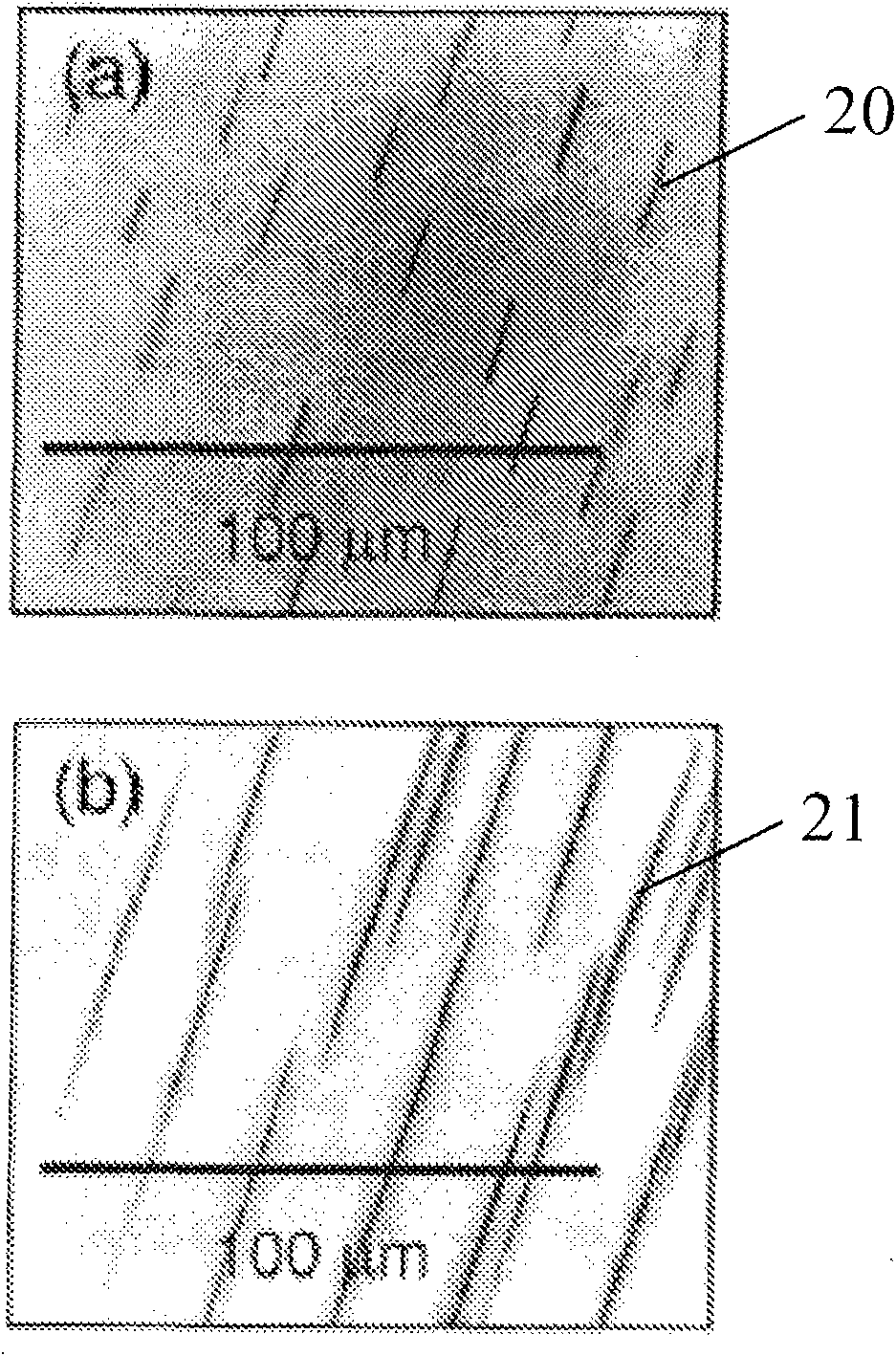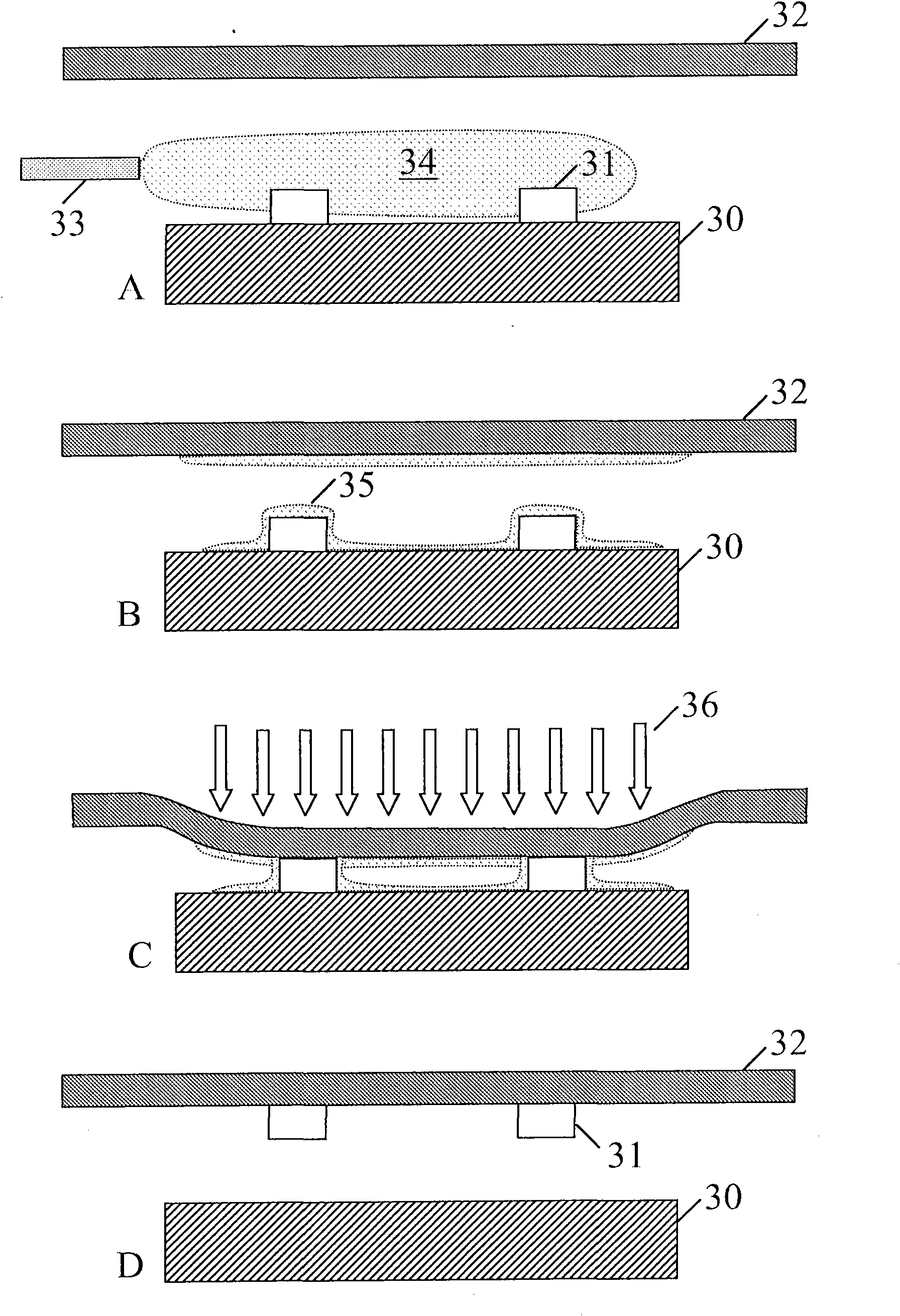Storage and transfer of organic nanofibers
An organic nanofiber, nanofiber technology, used in transportation and packaging, electrical components, circuits, etc., to solve storage-related problems
- Summary
- Abstract
- Description
- Claims
- Application Information
AI Technical Summary
Problems solved by technology
Method used
Image
Examples
Embodiment Construction
[0060] Embodiments of the invention relate to the transfer of nanofibers from a template substrate to a flexible storage medium. In a step prior to the transfer process, a template substrate loaded with nanofibers and a flexible storage medium are provided.
[0061] figure 1 and figure 2 A possible template substrate and an embodiment of nanofibers in the form of elongated arrays of nanofibers of organic molecules grown on a mica substrate are described.
[0062] figure 1 The growth of organic nanofibers2, 3 on a template substrate, or more specifically, the growth of phenylene nanofibers on a muscovite substrate, is briefly illustrated.
[0063] Mica can be prepared such that an electric field appears on the surface, for example by cleaving in air and immediately transferring to a vacuum device which can be degassed, for example at 410K for 0.5 hours or possibly longer; split directly.
[0064] The nanofibers presented in this section are made of p-phenylene oligomers (...
PUM
| Property | Measurement | Unit |
|---|---|---|
| width | aaaaa | aaaaa |
Abstract
Description
Claims
Application Information
 Login to View More
Login to View More - R&D
- Intellectual Property
- Life Sciences
- Materials
- Tech Scout
- Unparalleled Data Quality
- Higher Quality Content
- 60% Fewer Hallucinations
Browse by: Latest US Patents, China's latest patents, Technical Efficacy Thesaurus, Application Domain, Technology Topic, Popular Technical Reports.
© 2025 PatSnap. All rights reserved.Legal|Privacy policy|Modern Slavery Act Transparency Statement|Sitemap|About US| Contact US: help@patsnap.com



